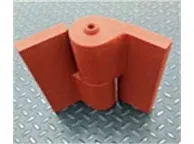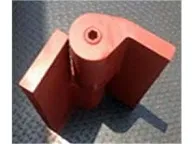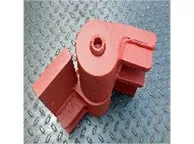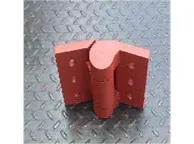Choosing the right type of hinges is important when it comes to securing the heavy-duty gates and doors in your commercial and industrial facilities. Heavy duty barrel hinges are one of the go-to choices for safety-driven hinges. Is that all? No, there’s more to it. This post offers insights on heavy duty barrel hinges and the reasons for their popularity.
An Overview of Heavy-Duty Barrel Hinges and the Reasons For Their Popularity
Heavy duty barrel hinges comprise a barrel and pivot that allows a gate or door to swing open and close as required. Earlier these hinges were mainly used in woodworking projects, however, now they are used in vertical load-bearing applications, too. These hinges remain invisible to us hidden behind doors or gates. The following are a few reasons for their popularity.
- These hinges are capable of supporting heavy duty doors and gates due to their design and construction.
- Despite their heavy-duty construction, these hinges assure easy and smooth operation. They allow doors and gates to close and open easily in high traffic areas.
- Made from materials like carbon steel or 304 and 316 grades of stainless steel, these hinges can easily withstand corrosion, moisture, and other environmental elements.
- As these hinges remain hidden behind the doors or gates, they are difficult to damage and tamper. This design combined with weld-on installation adds a layer of security.
- Heavy duty barrel hinges require minimal maintenance due to their design and material.
How to Install Heavy Duty Weld-on Barrel Hinges
Installation of heavy-duty weld-on barrel hinges demands care and precision. This is because it requires accurate alignment, as well as welding skills. These hinges are used for securing gates and doors in facilities where bolt-on installations wouldn’t suffice. This section offers a step-by-step guide on this installation.
- Collect All Materials: Firstly, you must possess all materials required for installation. These include heavy duty barrel hinges, a welding machine, a welding helmet and gloves, an angle grinder, a metal file, measuring tape or ruler, marker or chalk, level, and safety equipment.
- Plan and Measure: Once all the materials are in place, you must decide where the hinges need to be positioned on the frame and the door. Ensure that positioning aids in the even distribution of door weight. You can mark the position using a measuring tape and marker. The marking should align with the frame and the door.
- Clean the Surface: Next, prepare the surface for welding. The marked area where the hinges are to be installed must be clean and free from debris. You can remove any rust, debris, or paint that may be present at the place. This can be easily done using the angle grinder.
- Check the Alignment: Ensure the horizontal and vertical alignment of hinge placement marks. You can easily ensure this using a level. This would ensure the proper hanging of the door.
- Place the Hinge Properly: Place the hinge on the marked position and align it properly.
- Tack Weld the Hinge: Tack weld the hinge in place using the welding machine. This tack welding helps you make small welds that help hold the hinge in place without welding it. You can make adjustments to this if required.
- Check the Door Alignment: Once you do the tack welding, place the door carefully in place to check its alignment. This would help ensure the smooth opening and closing of the door.
- Make Adjustments: If the door is not aligned properly, then you can break the tack welds. Adjust the position of the hinge and tack weld it again.
- Complete the Welding: If you find the alignment satisfactory, proceed to complete the welding. You can weld the barrel hinges where the frame and door join together.
- Smooth the Welds: You can smooth the welds using an angle grinder if needed.
- Conduct Final Testing and Apply Finishing Touches: Test the door after the welding. Ensure it swings without any sagging or binding. You can also apply protective coating or paint to prevent corrosion on the hinge and the welds.
Important Things to Keep in Mind When Working with Heavy Duty Weld-on Barrel Hinges
Although working with heavy duty barrel hinges is like working with any other heavy-duty weld-on hinges, you still need to keep several things in mind to ensure the safety and performance of doors and gates. The following pointers will help you understand this better.
- Ensure the installation is done by the experts. If you are experienced in welding then you can handle it properly.
- Always wear the safety gear even if you are standing near the door or gate where barrel hinges are being installed.
- If working with heavy doors, ensure to use the three hinges for even weight distribution.
- Take the time to measure and align the hinges properly, because any misalignment can lead to door or gate performance issues.
Although the above-discussed steps will help you ensure the safety and performance of doors or gates, you must invest in quality barrel hinges, too. If you have been considering these hinges for your doors and gates in commercial and industrial facilities, be sure to source them from a trusted manufacturer like Kiesler Machine. The company provides heavy duty barrel hinges for doors and gates in different specifications. You can contact the experts at the company today to discuss your requirements.











